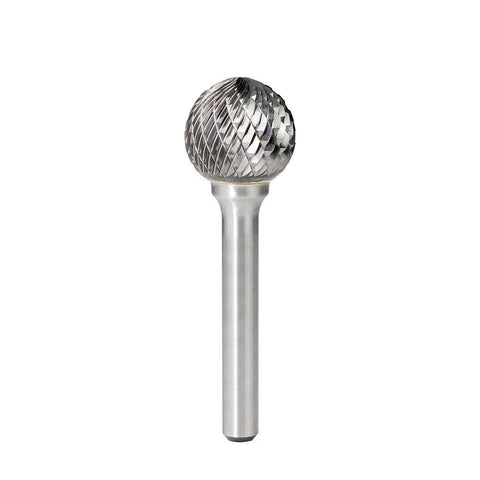How To Use Carbide Burrs?
Mastering the Use of Carbide Burrs: A Guide to Precision and Efficiency
Carbide burrs are an essential tool for professionals and hobbyists alike, offering exceptional durability, sharpness, and versatility for a wide range of applications. From grinding and shaping metals to engraving delicate materials, these burrs are prized for their ability to deliver precision and efficiency. However, using carbide burrs correctly requires an understanding of how to handle them properly, as well as knowing which techniques best suit various materials and tasks. With the right approach, carbide burrs can elevate your work, making projects faster, smoother, and more professional.
Before using carbide burrs, selecting the right one for the job is crucial. Carbide burrs come in a variety of shapes, such as cylindrical, spherical, and conical, each suited for different types of work. For example, cylindrical burrs are perfect for grinding flat surfaces or straight edges, while spherical burrs excel at contouring or carving curved shapes. Understanding the specific function of each shape helps ensure you achieve the best results. Additionally, choosing the right burr for the material is equally important. Coarse-toothed burrs are best for aggressive material removal, while fine-toothed burrs are more suited for smooth finishes and intricate detailing.
Using carbide burrs efficiently also means selecting the correct tool speed. Carbide burrs perform best at high speeds, typically between 25,000 to 35,000 RPM. The faster the burr spins, the smoother and more precise the cut will be. However, running the burr too fast can generate excess heat, potentially damaging both the material and the tool. It's important to adjust the speed based on the material you're working with. Harder materials, like steel or cast iron, often require lower speeds to prevent overheating, while softer metals or wood can tolerate higher speeds for quicker cuts.
Ensuring a steady hand and maintaining control is essential when using carbide burrs. The high-speed rotation of the burr can easily lead to mistakes if you're not careful. To achieve smooth, consistent results, it's important to use both hands for stability. One hand should guide the tool while the other supports it, ensuring a controlled, steady movement. Pushing too hard against the material can cause the burr to skip or gouge the surface, so it's best to let the tool do the work with light pressure. This allows for more precision and reduces wear on the burr itself.
Safety is another key consideration when using carbide burrs. Given their high rotational speeds and sharp edges, wearing the right protective gear is critical. Always wear safety glasses to protect your eyes from flying debris, as well as gloves to shield your hands from sharp edges or hot materials. Additionally, wearing a dust mask can prevent you from inhaling fine particles, especially when working with wood, metals, or plastics. Carbide burrs can produce a significant amount of dust and shavings, so maintaining a clean work environment and using proper ventilation is crucial for your safety and the longevity of your equipment.
To get the most out of carbide burrs, keeping the tool in motion is key. Stopping the burr in one place for too long can lead to uneven cuts, overheating, or burning the material. Instead, use smooth, sweeping motions to create a consistent finish. When deburring or smoothing out welds, moving the burr in different directions can help achieve an even surface. Avoid forcing the burr into the material; the sharpness of the carbide means it should cut through most materials with ease, so a gentle, consistent pressure is all that's needed.
When working on more intricate or detailed projects, such as engraving or carving, it's crucial to use the right burr size and shape for precision. Smaller burrs are ideal for detailed work, allowing for greater control over the fine cuts and engravings. Meanwhile, larger burrs are better suited for removing large amounts of material quickly. Switching between different sizes and shapes throughout a project can help you achieve the best results, especially when transitioning from broad material removal to fine finishing work.
Maintaining your carbide burrs is essential for prolonging their lifespan and ensuring optimal performance. Regular cleaning helps remove debris, pitch, and buildup from the cutting flutes, which can otherwise dull the burr and reduce its effectiveness. For metalworking applications, it's a good idea to use a lubricant or cutting fluid to reduce friction and heat buildup, which not only helps the burr last longer but also improves the overall quality of the cut. Inspecting the burr regularly for signs of wear or dullness can prevent poor-quality results and potential damage to the material.
Carbide burrs are designed to withstand demanding conditions, but taking care of them ensures they stay sharp and effective for as long as possible. Proper storage is also important; keeping the burrs in a protective case helps prevent accidental damage to their sharp cutting edges. A well-maintained set of carbide burrs can provide years of reliable use, making them a valuable investment for anyone regularly working with metal, wood, or other tough materials.
By understanding how to properly use carbide burrs, you can maximize their capabilities and improve your overall workflow. From selecting the right burr for the job to maintaining steady control and ensuring safety, the proper use of carbide burrs opens up endless possibilities for precision work, helping you achieve smooth, professional results every time.

